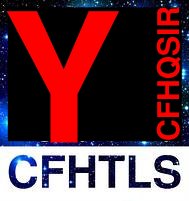|
|
|
CFHQSIR CFHTLS Y-band Maps Guide
|
|
Mapping a MegaCam CFHTLS Wide tile
A given WIRCam pointing in CFHQSIR bears two different names in the logs as a result
of an observing strategy meant to mitigate the impact of residual image from saturated
stars. As shown on the following figure, a MegaCam CFHTLS Wide tile (1 sq. deg.) is
covered by WIRCam in nine pointings taken in sequence starting on the top left and ending
on the bottom right for the first epoch. By reversing this order during the second epoch,
the signature of the residual image is guaranteed to be different, and can be consequently
rejected in the stack of four exposures. Example: W1.-1+3.E1.3 = W1.-1+3.E2.7.

Definition of exposures per epoch
Once the field association is established, the completion per physical pointing on the sky
can be derived. The survey maps use a basic cell coding representing the status of the
four exposures needed to complete a pointing made of 2 dithered exposures in each epoch. The
two exposures of the first epoch are assigned the top (A) and bottom (B) triangles and
the two exposures of the second epoch are assigned the left (C) and right triangles (D):

Exposure color coding
Based on the status of the Elixir validation for data quality assessment, a good exposure is
assigned the green color, otherwise it stays to the color of the yet to be observed image, red.
A WIRCam pointing not yet started (or not validated) will be represented with four red triangles.
A common structure seen in the maps as the survey progresses is the one having the Epoch 1 done
and the Epoch 2 yet to be observed:

|
|



